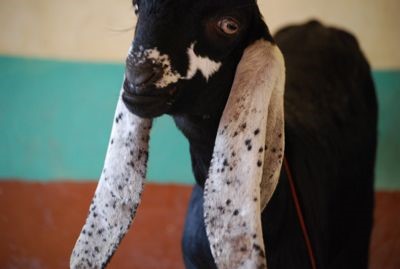Bhuj goats, native to northeastern Brazil, are valued for their dual-purpose capabilities, serving as reliable sources of both milk and meat. Renowned for their adaptability to the region's environmental conditions, Bhuj goats typically exhibit a striking black coat adorned with white or spotted lop ears and feature a distinctive Roman nose.
Originating from the Kutchi goats of India, Bhuj goats have been selectively bred to thrive in the semi-arid landscapes of northeastern Brazil. Their genetic heritage reflects their Indian ancestry, contributing to their robust constitution and resilience in challenging climates.
In addition to their adaptability, Bhuj goats are prized for their contributions to both milk and meat production. Their milk, although not as abundant as some dairy breeds, is esteemed for its quality and flavor. Meanwhile, their meat is recognized for its tenderness and taste, making Bhuj goats valuable assets to local farmers and communities in northeastern Brazil.
Overall, Bhuj goats represent a valuable genetic resource, combining their Indian heritage with local adaptations to fulfill the dual roles of milk and meat production in the northeastern region of Brazil.
